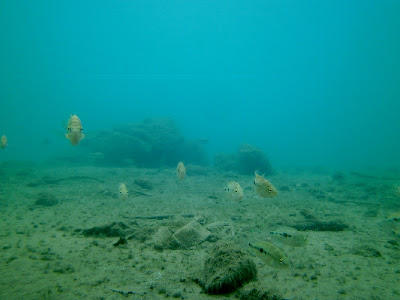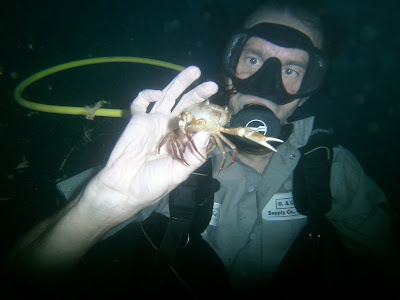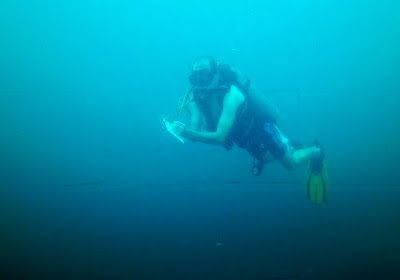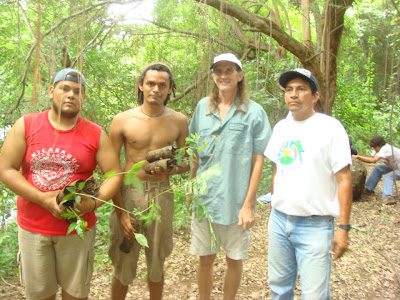Although
Laguna de Apoyo Nature Reserve is named for its prominent lake, there are many, diverse, interesting birds in the forest which lines the crater interior. The tropical dry forest ecosystem is alternately exceeedingly dry and wet, by seasons. The forest contains lots of wildlife, although the proximity of human settlements and tourism in the area threatens their populations. In our bird monitoring project, we have learned many things about the bird community of the forest here. Some birds never seen by us or only rarely, have been captured in mist netting, for instance.
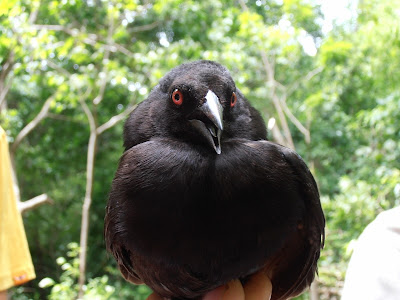 |
| The Giant Cowbird (Molothrus oryzivorus) was captured by our bird monitoring team in Laguna de Apoyo Nature Reserve. Photo by Wendy van Kooten. |
Birds do some amazing things. Some of them don't make nests. The females, once fertilized, place their eggs in the nests of other birds. Cowbirds are famous for this, and some cuckoos. The Giant Cowbird,
Molothrus oryzivorus , is one species which does this. In Laguna de Apoyo Nature Reserve, the Montezuma Oropendola (
Psaracolius montezuma) colonies, which number dozens of nests sharing a single tree, are sought by the Giant Cowbirds for nest parasitization. The eggs of nest parasites typically hatch more rapidly than the eggs of the host species, and the chicks are more precocious, that is, they are more vigorous upon hatching and they get fed preferentially, because they have the mouth highest when the parental birds come with food to share.
.jpg) |
| This female Summer Tanager (Piranga rubra) migrated from North America at the end of its mating season. Photo by Wendy van Kooten. |
Many birds migrate enormous distances each year, among them, the Summer Tanager (
Piranga rubra), which is common in Laguna de Apoyo Nature Reserve during the months September through May. The males are more active than the females and much more visible, flaming red colored. During the month of September, we often see immature Summer Tanagers begging food from mature adults, even after making a migration of more than one thousand kilometers, showing a very special prolonged dependence on the part of the first-year birds.
.jpg) |
| The Elegant Trogon (Trogon elegans) is gorgeous, but it makes a downright nasty sounding call! Photo by Wendy van Kooten. |
More than half of the species of birds found in Nicaragua do not undergo extensive, seasonal migrations. Some of those birds have very special diets and other needs for their life and reproduction. Among them are are the trogons. In
Laguna de Apoyo Nature Reserve, three trogon species are common-one of them is the spectacularly colored Elegant Trogon (
Trogon elegans). These birds consume fruit and nest in holes in relatively soft trees where their weak bills can carve or widen previously made holes. The trogons often occupy holes made previously by woodpeckers. The Elegant Trogon is large and gaudy, but not found just anywhere. Fortunately for us, we sometimes capture Elegant Trogons in the mist nets.
.jpg) |
| We take several measurements of the birds captured during mist netting. Elmer measures the wing of this Blue-throated Goldentail (Hylocharis eliciae). Photo by Wendy van Kooten. |
The hummingbirds (Family
Trochilidae) are the smallest of birds in the Nicaraguan forests, and Laguna de Apoyo Nature Reserve boasts several species. We often capture hummingbirds, and having one in the hand is an unforgettable experience. Hummingbirds are even more beautiful at close range than when sighted several meters away. One species, the Ruby-throated Hummingbird (
Archilochus colubris), alternates between North America and our region, the others are year-round residents in Nicaragua.
 |
| Our team eats well during their work! Florian prepares the stew. Photo by Wendy van Kooten. |
Monitoring the bird populations mostly means creating an extensive database in which we learn more and more about the birds present in our forest. We capture birds every month of the year. Some bird species are captured often, others very rarely, and all this information helps us understand which birds are there and what they need to live in these forests which are affected more and more by human activity. We complement mist-netting with observations by sight and hearing, made quantitatively. As one might expect, many conspicuous birds are not caught, and many birds caught are hardly noticed by our observers.
 |
| Our team transcribes data and rests between periods of bird measurement. Photo by Wendy van Kooten. |
Volunteers manage this project, some of them coming from developed countries. We invite anyone interested in learning about birds to apply for this project. A volunteer or intern can learn about the tropical birds and how to handle them. The opportunity to work in the outdoors, under the canopy of the jungle, with monkeys and other animals always nearby, is unforgettable. To volunteer to work on this project, please write us
here.
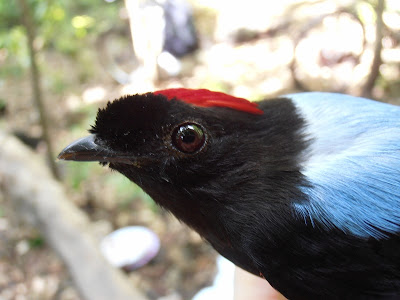 |
| The most common bird captured in mist netting in Laguna de Apoyo Nature Reserve is the Long-tailed Manakin (Chiroxiphia linearis). Photo by Wendy van Kooten. |
Among the very special birds in Laguna de Apoyo Nature Reserve is the Long-tailed Manakin (
Chiroxiphia linearis). The males are boldly colored, in crimson red, baby blue and jet black. We capture more of this species than of any other in our monitoring project. We also find it interesting that we catch many more males than females. Males engage in very interesting courtship dances, usually performed by two males in tandem.
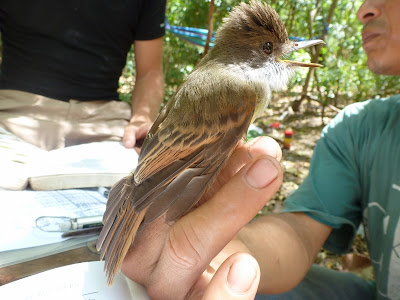 |
| The Myiarchus flycatchers are very similar, and difficult to distinguish. Photo by Wendy van Kooten. |
Mesoamerica hosts many species of tyrant flycatchers (Family Tyrannidae). In Nicaragua, several very similar flycatcher species are found of the genus
Myiarchus. Our technicians have their work cut out for them when a
Myiarchus flycatcher is captured. Some of them are more easily distinguished by voice than by sight.
 |
| The Blue-tailed Hummingbird (Amazilia cyanura), pictured here, looks very similar to the Steely-vented Hummingbird (Amazilia saucerrottei). Photo by Wendy van Kooten. |
Several identification issues exist among birds, and in Nicaragua, one of them is found among two hummingbird species: the Blue-tailed Hummingbird (
Amazilia cyanura), and the Steely-vented Hummingbird (
Amazilia saucerrottei). These two species have different, but overlapping, ranges, and both are found in
Laguna de Apoyo Nature Reserve. Our monitoring allows us to gather information about these two species and begin to understand how they interact. It also gives us some incredible opportunities to enrich our birdwatching experiences: now we know how the bird looks in the hand, it makes the bird seem more colorful and alive when perched several meters away.
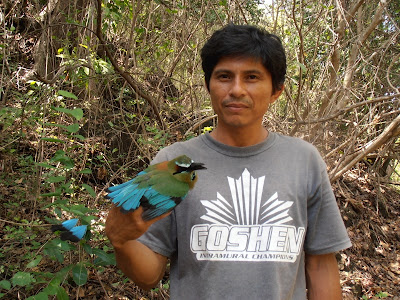 |
| The Turquoise-browed Motmot (Eumomota superciliosa) is loved by all Nicaraguans. Photo by Wendy van Kooten. |
For us, the study of birds is also a study of humans, because the birds we study react in unique ways to the presence of humans. Also, we humans react differently to different species of birds. For instance, the Turquoise-browed Motmot (
Eumomota superciliosa) always evokes a thrill from all who get to see it, and moreso when seeing it up close when captured during mist netting. Motmots are truly tropical birds, too, with vibrant colors in fascinating patterns. This species is common in Laguna de Apoyo Nature Reserve, especially because it nests in dirt banks which are abundant. Another species, the Blue-crowned Motmot (
Momotus momota), is much less common here.
 |
The Ochre-bellied Flycatcher (Mionectes oleaginus) captured here was a big surprise for our team. This bird is found typically in humid forests, but this documentation shows its presence considerably further westward than we expected.
Most of the tyrant flycatchers feed principally on flying insects. An exception is the Ochre-bellied Flycatcher (Mionectes oleaginus) which consumes lots of fruit and seeds. Even its bill is suggestive of, perhaps, a tanager, and not a flycatcher. This species tends to blend in with the colors of the forest interior, where shadows abound, although this bird is common in at least some habitats.
|

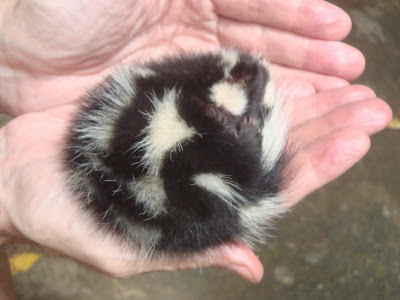
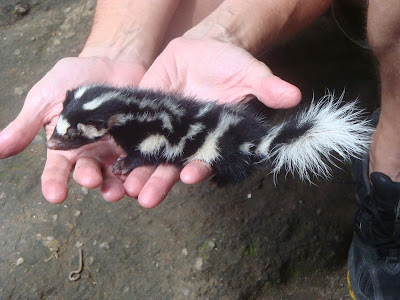
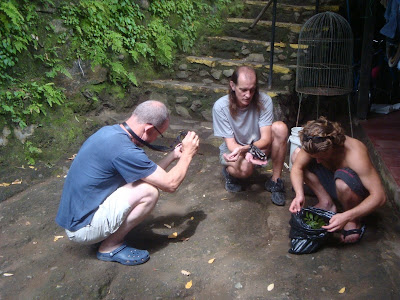
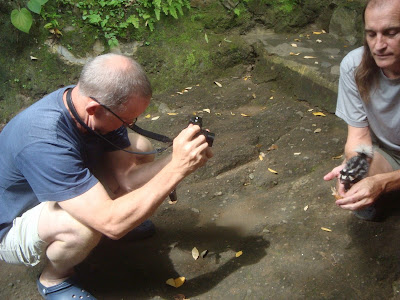

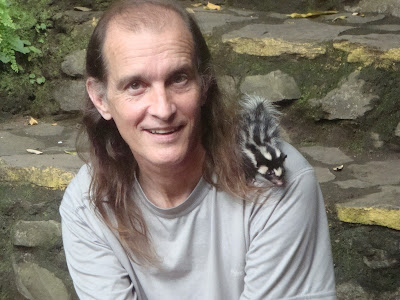
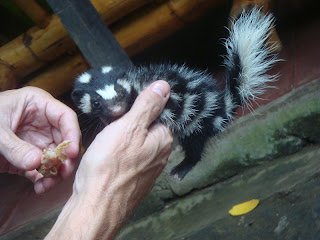
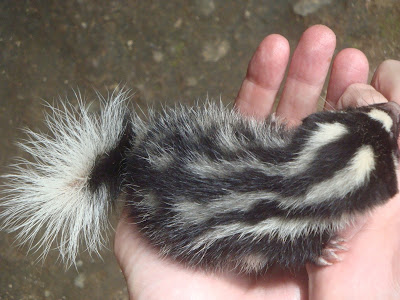
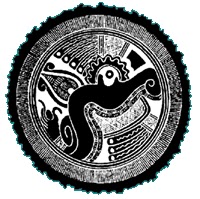

.jpg)
.jpg)
.jpg)







